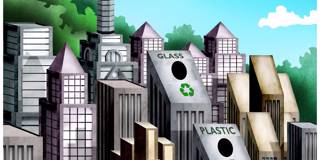Sustainable Cities
To most people, big, densely-populated cities look like ecological nightmares, wastelands of concrete and garbage and diesel fumes and traffic jams. But, compared to other inhabited places, cities are models of environmental responsibility.
NEW YORK – To most people, big, densely-populated cities look like ecological nightmares, wastelands of concrete and garbage and diesel fumes and traffic jams. But, compared to other inhabited places, cities are models of environmental responsibility. By the most significant measures, the greenest community in the United States is New York City, the only American city that approaches environmental standards set elsewhere in the world.



NEW YORK – To most people, big, densely-populated cities look like ecological nightmares, wastelands of concrete and garbage and diesel fumes and traffic jams. But, compared to other inhabited places, cities are models of environmental responsibility. By the most significant measures, the greenest community in the United States is New York City, the only American city that approaches environmental standards set elsewhere in the world.